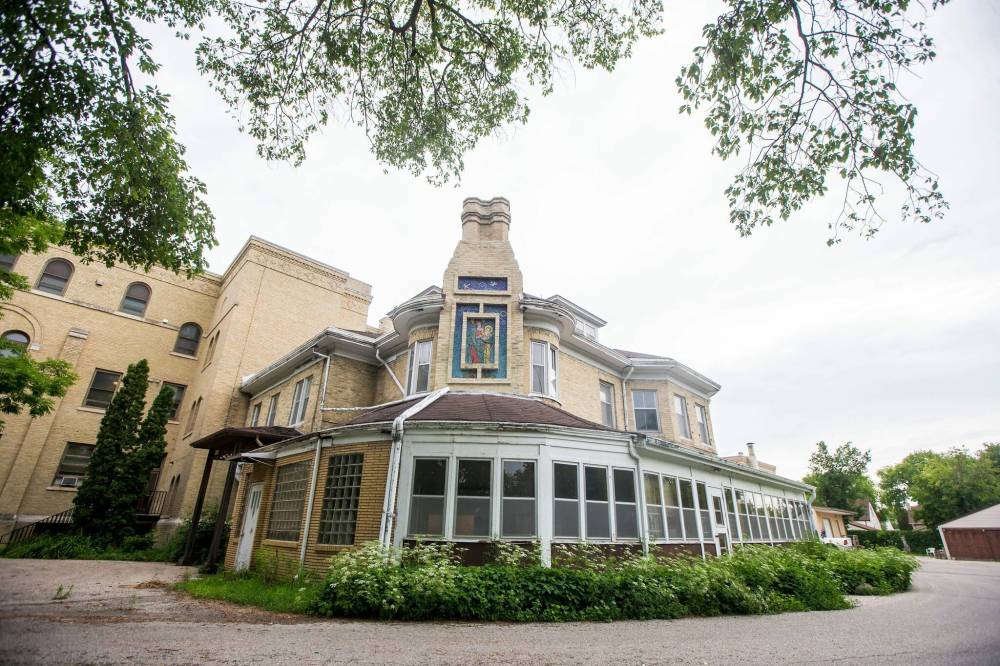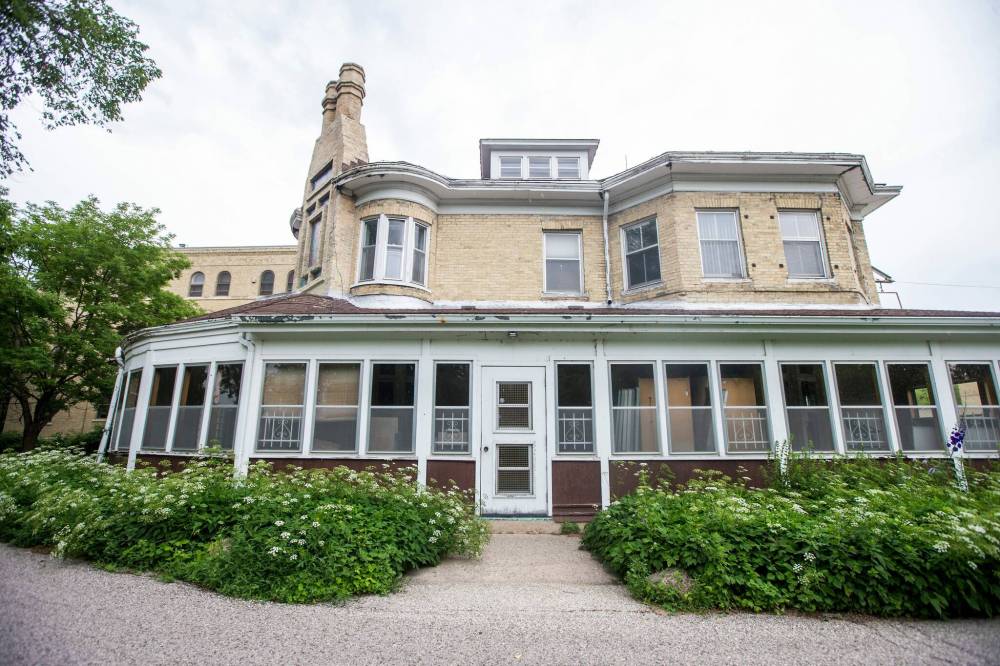City asked to delist mansion
Converting 1878 heritage structure into transition home not feasible, group says
Advertisement
Read this article for free:
or
Already have an account? Log in here »
To continue reading, please subscribe:
Monthly Digital Subscription
$0 for the first 4 weeks*
- Enjoy unlimited reading on winnipegfreepress.com
- Read the E-Edition, our digital replica newspaper
- Access News Break, our award-winning app
- Play interactive puzzles
*No charge for 4 weeks then price increases to the regular rate of $19.00 plus GST every four weeks. Offer available to new and qualified returning subscribers only. Cancel any time.
Monthly Digital Subscription
$4.75/week*
- Enjoy unlimited reading on winnipegfreepress.com
- Read the E-Edition, our digital replica newspaper
- Access News Break, our award-winning app
- Play interactive puzzles
*Billed as $19 plus GST every four weeks. Cancel any time.
To continue reading, please subscribe:
Add Free Press access to your Brandon Sun subscription for only an additional
$1 for the first 4 weeks*
*Your next subscription payment will increase by $1.00 and you will be charged $16.99 plus GST for four weeks. After four weeks, your payment will increase to $23.99 plus GST every four weeks.
Read unlimited articles for free today:
or
Already have an account? Log in here »
Hey there, time traveller!
This article was published 14/07/2022 (1250 days ago), so information in it may no longer be current.
A request to demolish a former mansion believed to be Winnipeg’s oldest protected heritage structure is headed for a council vote.
Marymound, which owns the Leacock House at 442 Scotia St., is asking the city to remove it from Winnipeg’s list of historical resources, so it can be demolished. The social-service organization had hoped to convert the building into a long-planned transition home but now believes that renovation would be far too expensive and ill-fitted for the intended program.
In a letter, the organization says an extensive planning process determined the home, built in 1878, can’t feasibly offer that housing, which would support young people who struggle with mental-health difficulties, substance misuse, trauma and other complex needs.

“Ultimately, Marymound determined that this approach not only poses significant risk in its incompatibility with the intended use, it also is cost prohibitive, with the cost-per-square-foot in extreme excess of what is felt to be a responsible use of donor money,” writes Lindsay Oster, principal architect for Prairie Architects, on behalf of Marymound.
The organization believes it would cost at least $4.7 million to renovate the building while protecting all of its character-defining elements.
The letter notes that redevelopment would also pose significant safety concerns for the youths the program would serve.
“The future occupants of the building… require an environment where measures are implemented to reduce the risk of death by suicide,” wrote Oster.
The letter says the main staircase, for example, has too many ligature points and curved glass windows require added safety glass.
The letter notes the Leacock House is vacant and “in desperate need of repair.”
The request to remove the heritage protection for the building, which prevents its demolition and ensures key elements are preserved, was denied by the city’s historical buildings and resources committee this week, which is only permitted to consider heritage value, and not economic factors, in its decisions.
Winnipeg heritage planner Rina Ricci told the committee the home is significant for multiple reasons.
“I believe it’s the oldest house that we have on the list of historical resources. It’s an example of the Queen Anne Revival style,” said Ricci.
After initially serving as a large home, Leacock House was taken over by the Sisters of Our Lady of Charity of the Good Shepherd with a goal to “rehabilitate young persons in the juvenile detention system” in 1911, said Ricci. In the 1950s, it became part of what was known as the Marymound complex.
Currently, the historical listing protects the exterior of the building and many interior features, including original tin ceilings, wood finishes and the main staircase and curved glass windows.

The call to delist it still requires additional city hall votes, with council slated to make the final decision.
Coun. John Orlikow, chairman of the historical resources committee, said councillors can consider all factors, including cost and development plans, to determine the final vote.
Orlikow said he appreciates Marymound’s initial attempt to preserve the building while redesigning it for transitional housing, even though it wasn’t deemed possible.
“I prefer to keep the building… (but) there are some economic issues with that. And the purpose of what they (want to) repurpose the building for is very admirable and needed, too,” he said.
Should council approve the delisting, Orlikow said he’s hopeful at least some of its defining elements can be preserved.
Joyanne.pursaga@freepress.mb.ca
Twitter: @joyanne_pursaga

Joyanne is city hall reporter for the Winnipeg Free Press. A reporter since 2004, she began covering politics exclusively in 2012, writing on city hall and the Manitoba Legislature for the Winnipeg Sun before joining the Free Press in early 2020. Read more about Joyanne.
Every piece of reporting Joyanne produces is reviewed by an editing team before it is posted online or published in print — part of the Free Press‘s tradition, since 1872, of producing reliable independent journalism. Read more about Free Press’s history and mandate, and learn how our newsroom operates.
Our newsroom depends on a growing audience of readers to power our journalism. If you are not a paid reader, please consider becoming a subscriber.
Our newsroom depends on its audience of readers to power our journalism. Thank you for your support.
History
Updated on Thursday, July 14, 2022 5:28 PM CDT: Adds email address to end of story.
Updated on Friday, July 15, 2022 10:58 AM CDT: Adds photos


